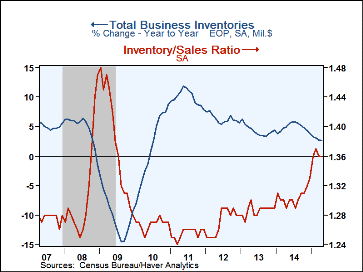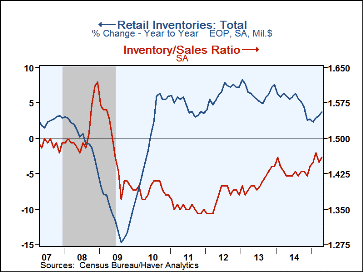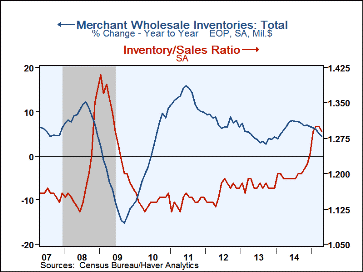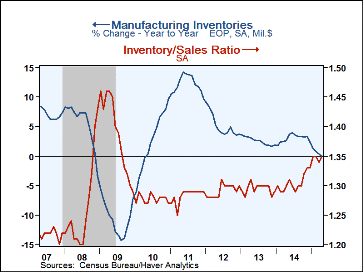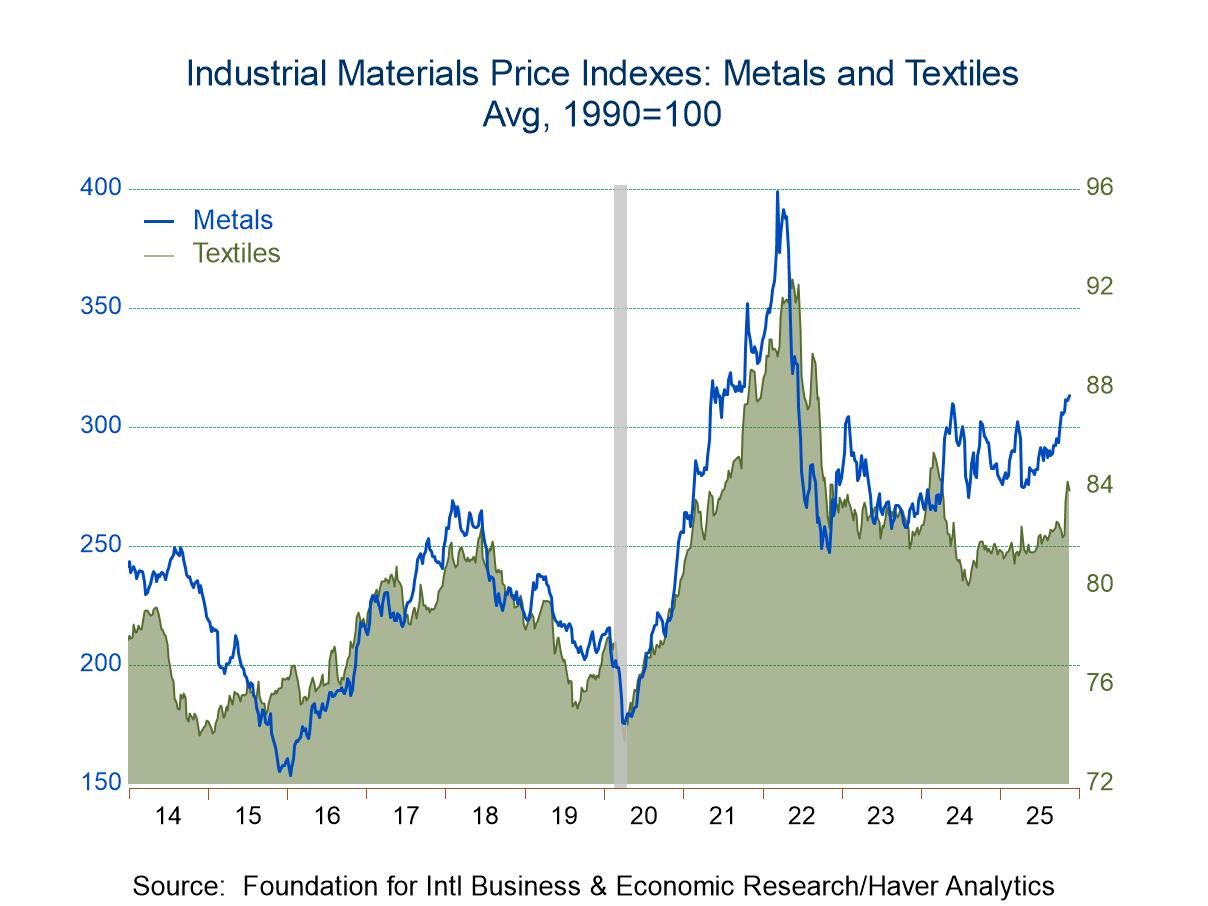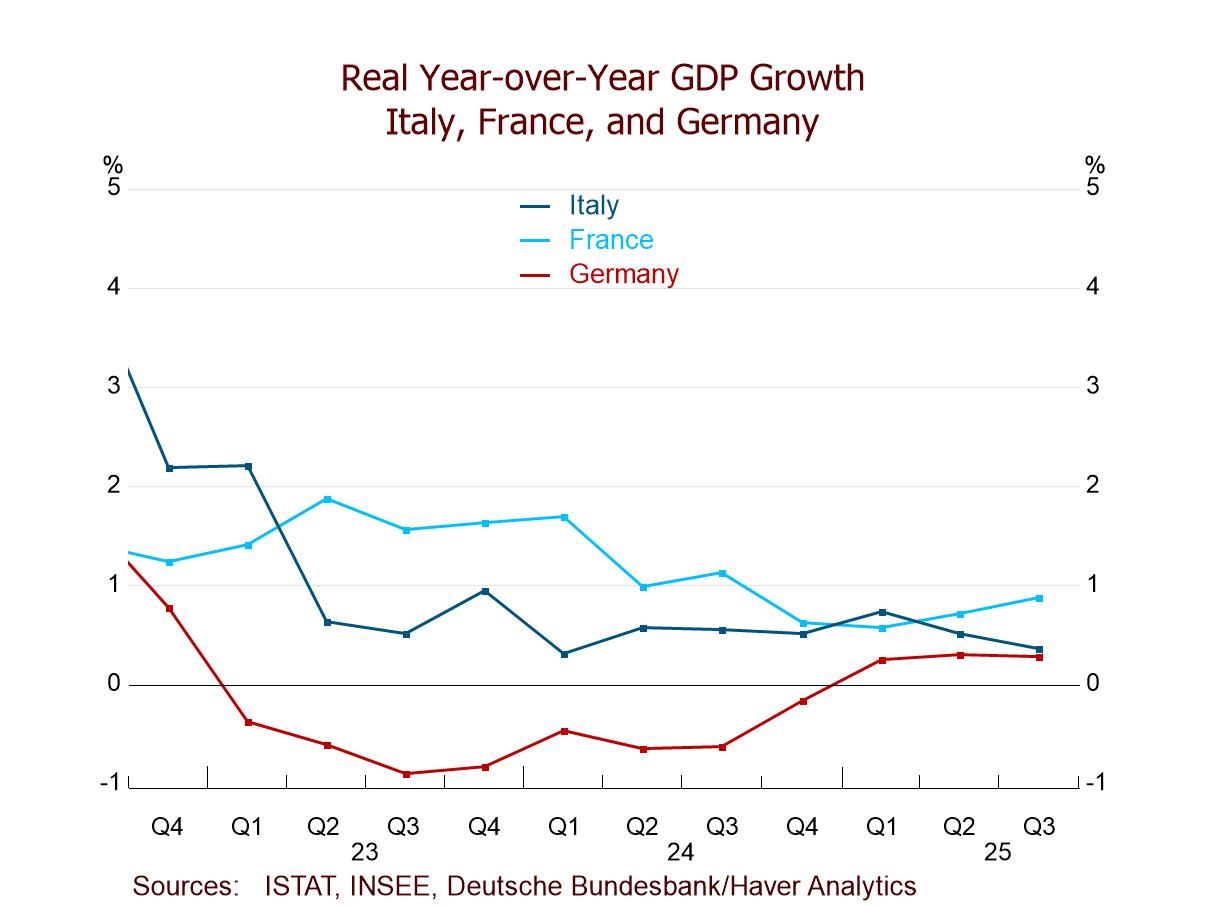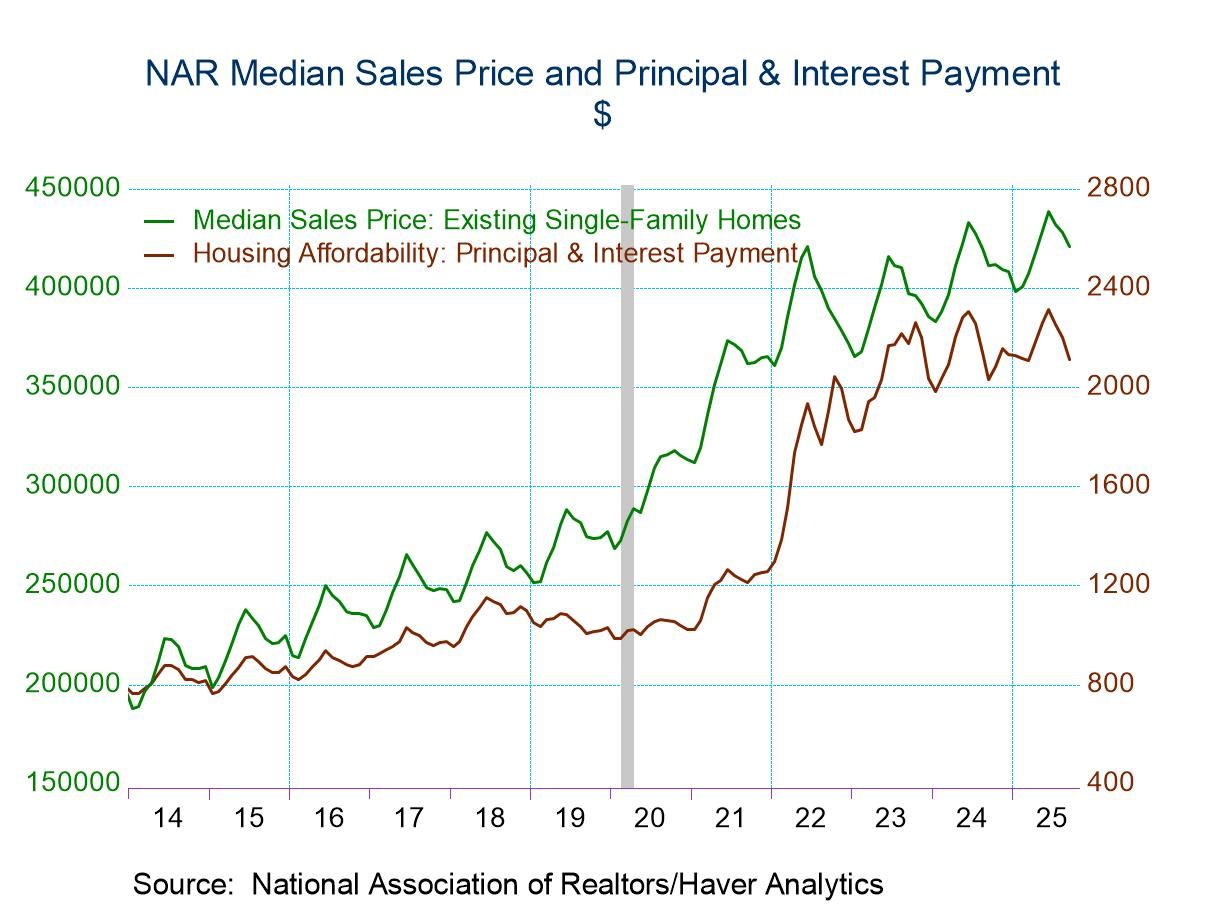 Global| Jun 11 2015
Global| Jun 11 2015U.S. Business Inventory Growth Increases but Still Lags Sales
by:Tom Moeller
|in:Economy in Brief
Summary
Total business inventories increased 0.4% during April (2.6% y/y) following an unrevised 0.1% March uptick. During the last three months, inventory growth picked up to 3.2% (AR) from its January low of 0.1%. Total business sales [...]
Total business inventories increased 0.4% during April (2.6% y/y) following an unrevised 0.1% March uptick. During the last three months, inventory growth picked up to 3.2% (AR) from its January low of 0.1%. Total business sales increased 0.6% (-2.3% y/y), the same as during March. It raised the 3-month change to 3.3% (AR), its best since last July. As a result, the inventory/sales ratio for April held steady at 1.36, just off its expansion high of 1.37.
Inventories in the retail sector jumped 0.8% (3.8% y/y) leaving three-month growth at 6.6%, its quickest since July. General merchandise inventories surged 1.4% (1.5% y/y) and at a 3.6% rate since January. Auto inventories jumped 1.2% (5.9% y/y). Clothing inventories rose 0.9% (6.0% y/y) and at a 10.0% annual rate during the last three months. It was the quickest growth rate in over a year. Furniture inventories declined 0.3% (+0.6% y/y), off in three of the last four months.
Merchant wholesale inventories gained 0.4% (4.5% y/y) in April. The 3.1% rate of growth in the last three months was the slowest since mid-2013. Factory inventories improved 0.1% and by the same amount during the last 12 months. Three- month growth picked up, however, to a slim 0.5%.
The 0.6% rise in business sales (-2.3% y/y) left them rising at a 3.3% annual rate during the last three months, a turnaround from just the prior month. The latest increase reflected a 0.1% uptick (2.0% y/y) in retail spending but more life was apparent in May. Sales excluding motor vehicles slipped marginally (-1/0% y/y) but rose strongly in May. Wholesale sales jumped 1.6% (-3.3% y/y) helping to revive 3-month growth to 2.9%, the first positive reading since September. Factory shipments declined marginally (-3.6% y/y) but rose at a 2.6% rate during the last three months.
The total business inventory-to-sales ratio remained stable m/m but has been trending higher since early 2011. Each of the business sectors participated in the rise. The increase in the wholesale sector ratio to 1.29 is from a low of 1.12 early in 2011. This is nearly the highest since mid-2011. The retail sector realized an I/S ratio 1.46 in April, also nearly the highest since the middle of 2009. The ratio excluding autos displayed similar upward movement. The manufacturing sector I/S ratio is now also at the highest point since 2009.
The manufacturing and trade data are in Haver's USECON database.
| Manufacturing & Trade (%) | Apr | Mar | Feb | Apr Y/Y | 2014 | 2013 | 2012 |
|---|---|---|---|---|---|---|---|
| Business Inventories | 0.4 | 0.1 | 0.3 | 2.6 | 3.8 | 4.4 | 5.7 |
| Retail | 0.8 | 0.3 | 0.5 | 3.8 | 2.7 | 7.6 | 7.3 |
| Retail excl. Motor Vehicles | 0.6 | 0.1 | 0.5 | 2.7 | 2.2 | 5.0 | 3.0 |
| Merchant Wholesalers | 0.4 | 0.2 | 0.2 | 4.5 | 6.7 | 4.2 | 6.6 |
| Manufacturing | 0.1 | -0.1 | 0.1 | 0.1 | 2.4 | 1.9 | 3.8 |
| Business Sales (%) | |||||||
| Total | 0.6 | 0.6 | -0.3 | -2.3 | 3.4 | 3.0 | 5.0 |
| Retail | 0.1 | 1.6 | -0.6 | 0.6 | 3.6 | 3.9 | 4.8 |
| Retail excl. Motor Vehicles | -0.0 | 1.1 | -0.2 | -1.0 | 2.5 | 2.7 | 3.8 |
| Merchant Wholesalers | 1.6 | -0.3 | -0.6 | -3.3 | 4.3 | 3.1 | 5.9 |
| Manufacturing | -0.0 | 0.5 | 0.1 | -3.6 | 2.5 | 2.1 | 4.4 |
| I/S Ratio | |||||||
| Total | 1.36 | 1.36 | 1.37 | 1.29 | 1.31 | 1.29 | 1.27 |
| Retail | 1.46 | 1.45 | 1.47 | 1.42 | 1.43 | 1.41 | 1.38 |
| Retail Excl. Motor Vehicles | 1.28 | 1.27 | 1.28 | 1.23 | 1.24 | 1.23 | 1.21 |
| Merchant Wholesalers | 1.29 | 1.30 | 1.30 | 1.19 | 1.20 | 1.18 | 1.16 |
| Manufacturing | 1.35 | 1.34 | 1.35 | 1.30 | 1.31 | 1.30 | 1.29 |
Tom Moeller
AuthorMore in Author Profile »Prior to joining Haver Analytics in 2000, Mr. Moeller worked as the Economist at Chancellor Capital Management from 1985 to 1999. There, he developed comprehensive economic forecasts and interpreted economic data for equity and fixed income portfolio managers. Also at Chancellor, Mr. Moeller worked as an equity analyst and was responsible for researching and rating companies in the economically sensitive automobile and housing industries for investment in Chancellor’s equity portfolio. Prior to joining Chancellor, Mr. Moeller was an Economist at Citibank from 1979 to 1984. He also analyzed pricing behavior in the metals industry for the Council on Wage and Price Stability in Washington, D.C. In 1999, Mr. Moeller received the award for most accurate forecast from the Forecasters' Club of New York. From 1990 to 1992 he was President of the New York Association for Business Economists. Mr. Moeller earned an M.B.A. in Finance from Fordham University, where he graduated in 1987. He holds a Bachelor of Arts in Economics from George Washington University.


